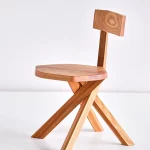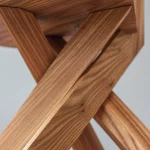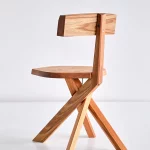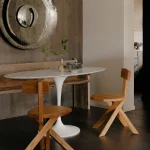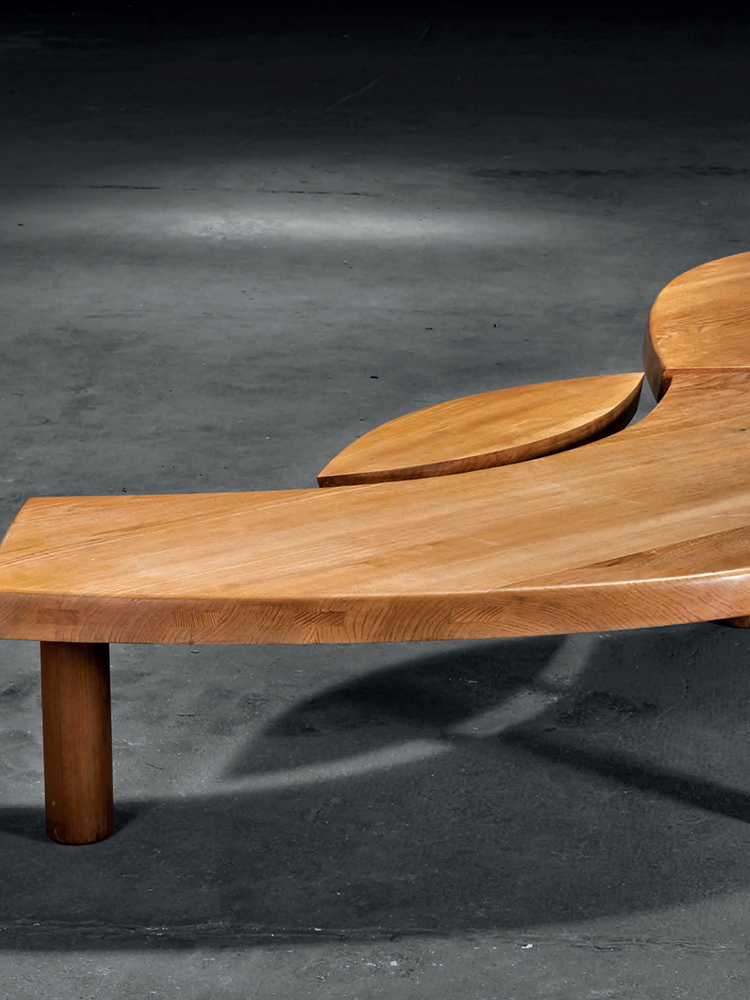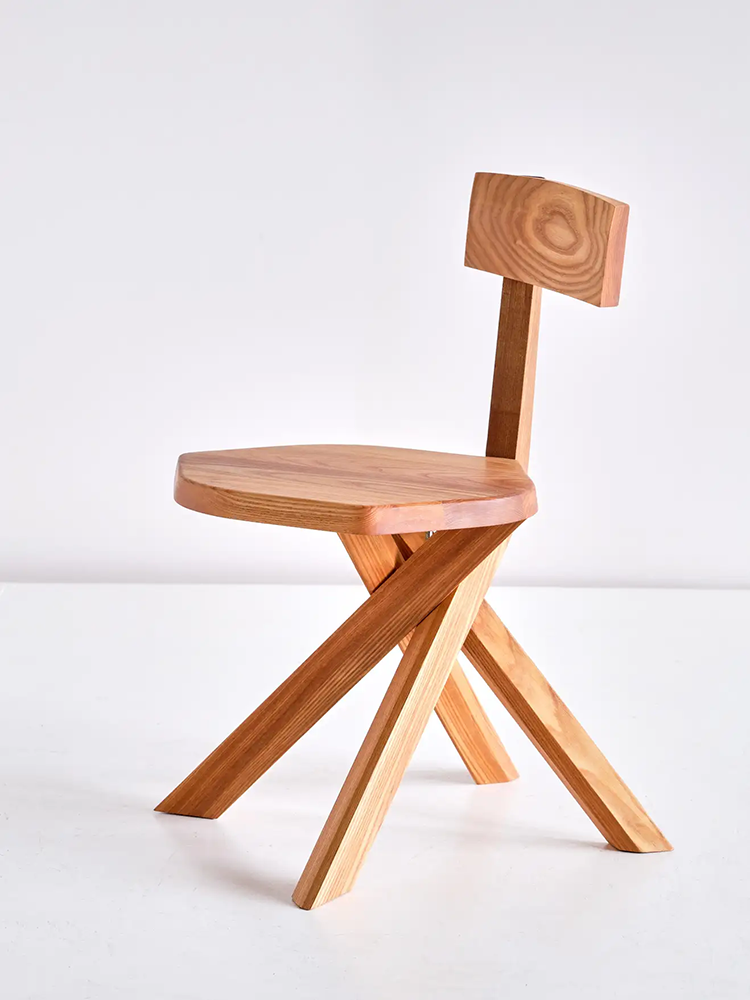
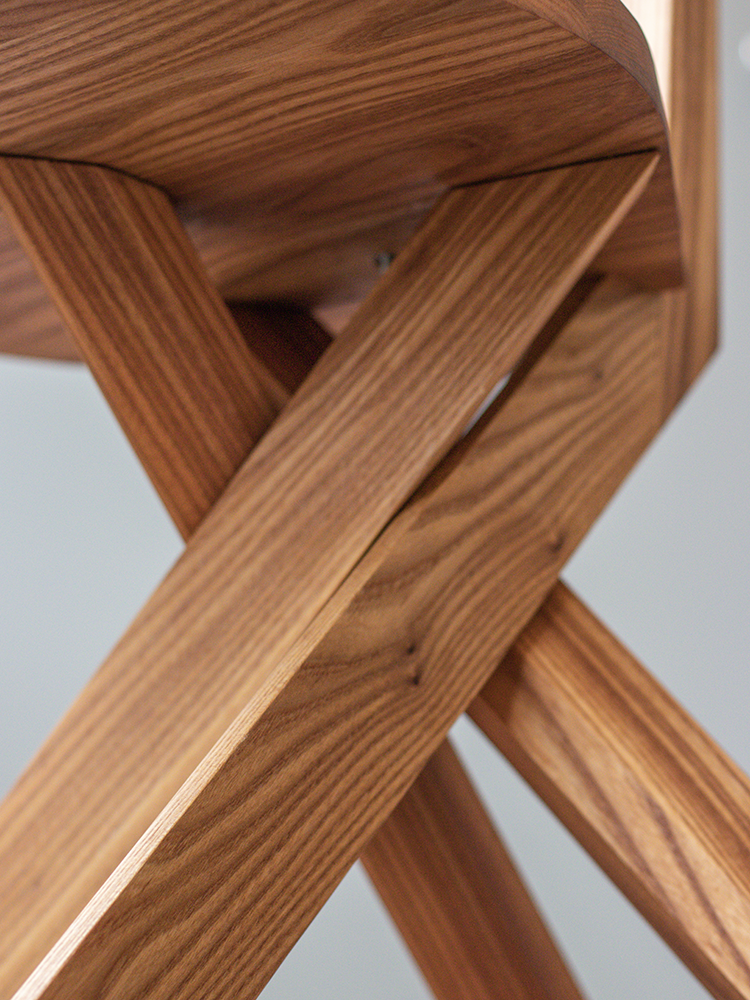
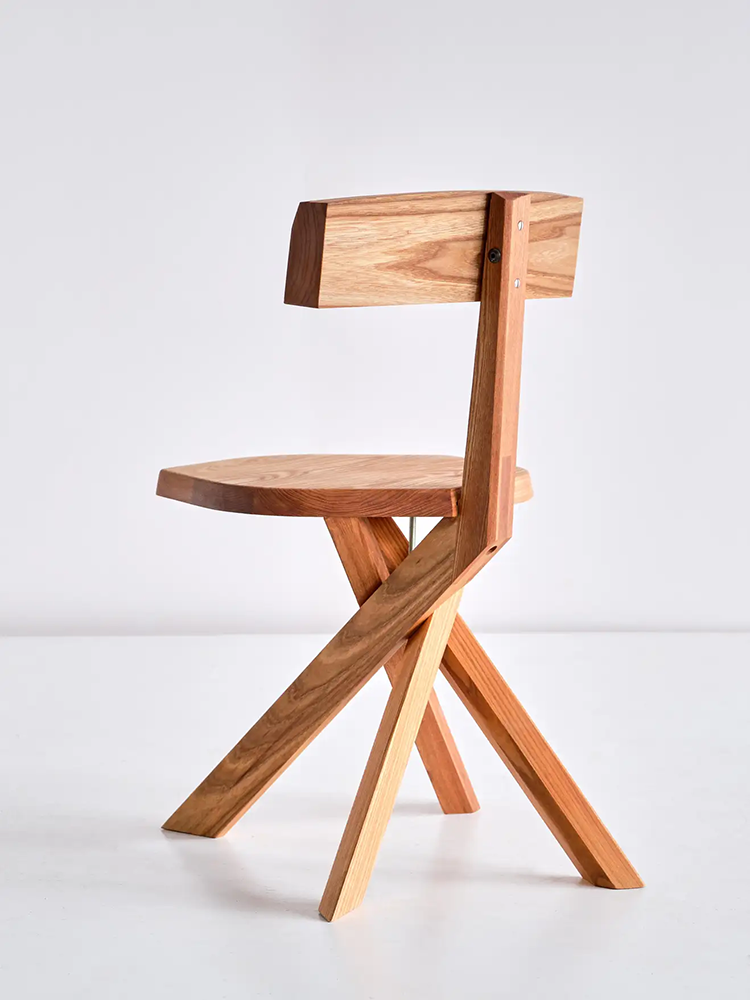
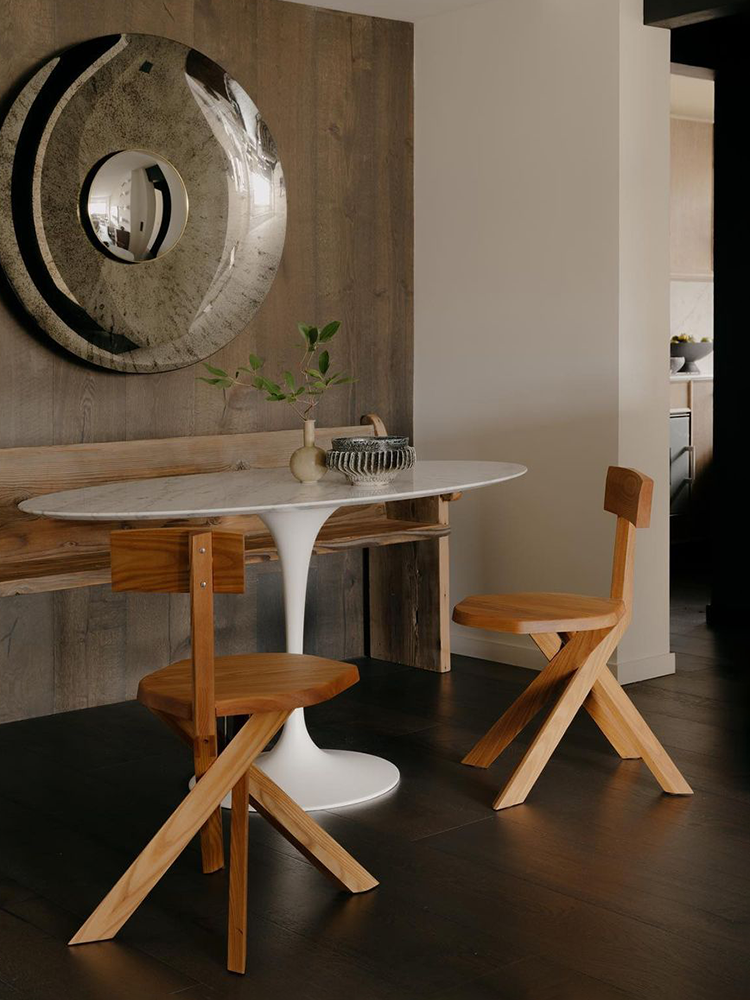
© Photo
History
In 1973, Pierre Chapo developed the T 21 table and the S 31 stool and then completed the “converging lines” furniture range with the introduction of the S 34 chair. The complexity of the base, composed of legs converging together, forced him to extend his research, notably in the field of plane geometry, to obtain a perfect construction.
The diameter of the S 34 seat is too small to ensure the structure’s stability, and too big to borrow the S 31 stool’s tripod base. Pierre Chapo solved this problem by thinking of a dihedral angle laid on the ground, which receives the seat in the middle and the back at the top. This section rests on a transverse leg consolidated by the two other legs, assembled together in such a way as to distribute the weight in relation to the four converging legs. The last leg completes the assembly by resting on the first at a dihedral angle. The polygonal seat is also exactly positioned to distribute the load of the seated person
S 34
Chair with 7 - shaped back
The asymmetric case built to extend one of the legs reminds to the handle of the scythe or the number 7, a Chair in wood.
Details
Essence
Made in Elm or oak. Other species may be proposed (ash, beech, Cypress...) all issues of a responsible forest management.
Finishes :
Finally we apply a mixture of simple and natural oil of linseed and turpentine. Perfect for a daily use , simple and respectful of the environment.
Making :
Workshop of Chapo Creations - France
Design :
Pierre Chapo – © 1973




History
In 1973, Pierre Chapo developed the T 21 table and the S 31 stool and then completed the “converging lines” furniture range with the introduction of the S 34 chair. The complexity of the base, composed of legs converging together, forced him to extend his research, notably in the field of plane geometry, to obtain a perfect construction.
The diameter of the S 34 seat is too small to ensure the structure’s stability, and too big to borrow the S 31 stool’s tripod base. Pierre Chapo solved this problem by thinking of a dihedral angle laid on the ground, which receives the seat in the middle and the back at the top. This section rests on a transverse leg consolidated by the two other legs, assembled together in such a way as to distribute the weight in relation to the four converging legs. The last leg completes the assembly by resting on the first at a dihedral angle. The polygonal seat is also exactly positioned to distribute the load of the seated person
T 23
COFFEE TABLE, 3 LEGS
The asymmetric case built to extend one of the legs reminds to the handle of the scythe or the number 7, a Chair in wood.
Width : 50 cm
Height : 73 cm
Length : 40 cm
Weight : 6 kg
Details
Essence
Made in Elm or oak. Other species may be proposed (ash, beech, Cypress...) all issues of a responsible forest management.
Finishes :
Finally we apply a mixture of simple and natural oil of linseed and turpentine. Perfect for a daily use , simple and respectful of the environment.
Making :
Workshop of Chapo Creations - France
Design :
Pierre Chapo – © 1973




© Photo
S 34
Chair with 7 - shaped back
The asymmetric case built to extend one of the legs reminds to the handle of the scythe or the number 7, a Chair in wood.
Width : 50 cm
Height : 73 cm
Length : 40 cm
Weight : 6 kg
Details
Essence
Made in Elm or oak. Other species may be proposed (ash, beech, Cypress...) all issues of a responsible forest management.
Finishes :
Finally we apply a mixture of simple and natural oil of linseed and turpentine. Perfect for a daily use , simple and respectful of the environment.
Making :
Workshop of Chapo Creations - France
Design :
Pierre Chapo – © 1973
History
In 1973, Pierre Chapo developed the T 21 table and the S 31 stool and then completed the “converging lines” furniture range with the introduction of the S 34 chair. The complexity of the base, composed of legs converging together, forced him to extend his research, notably in the field of plane geometry, to obtain a perfect construction.
The diameter of the S 34 seat is too small to ensure the structure’s stability, and too big to borrow the S 31 stool’s tripod base. Pierre Chapo solved this problem by thinking of a dihedral angle laid on the ground, which receives the seat in the middle and the back at the top. This section rests on a transverse leg consolidated by the two other legs, assembled together in such a way as to distribute the weight in relation to the four converging legs. The last leg completes the assembly by resting on the first at a dihedral angle. The polygonal seat is also exactly positioned to distribute the load of the seated person
DIMENSIONS


